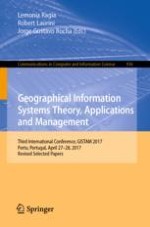2019 | OriginalPaper | Buchkapitel
Implications of Data Density and Length of Collection Period for Population Estimations Using Social Media Data
verfasst von : Samuel Lee Toepke
Erschienen in: Geographical Information Systems Theory, Applications and Management
Aktivieren Sie unsere intelligente Suche, um passende Fachinhalte oder Patente zu finden.
Wählen Sie Textabschnitte aus um mit Künstlicher Intelligenz passenden Patente zu finden. powered by
Markieren Sie Textabschnitte, um KI-gestützt weitere passende Inhalte zu finden. powered by
